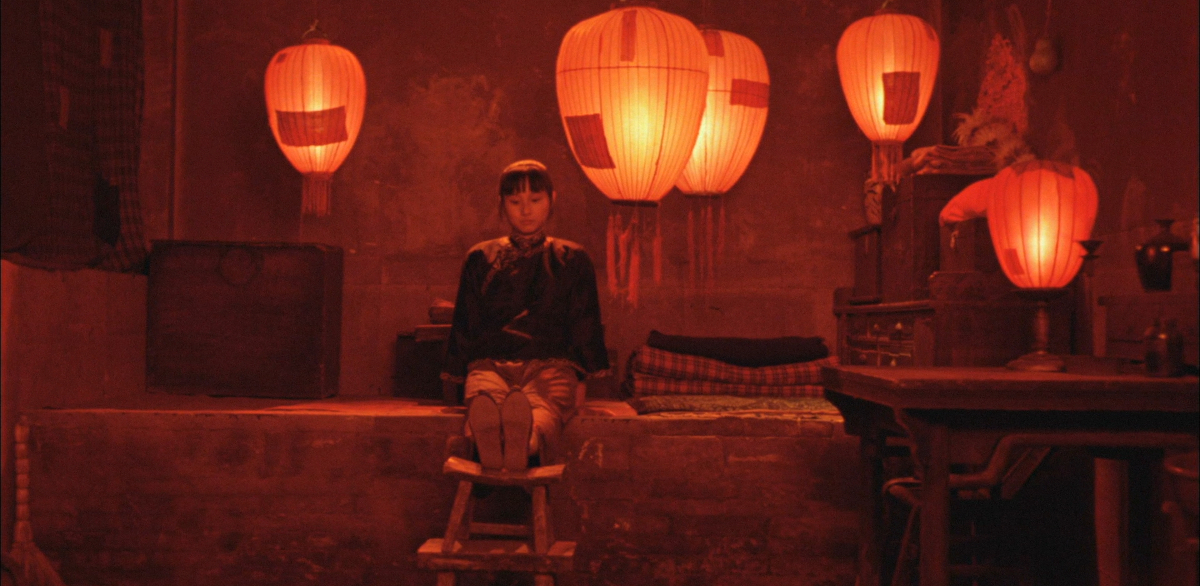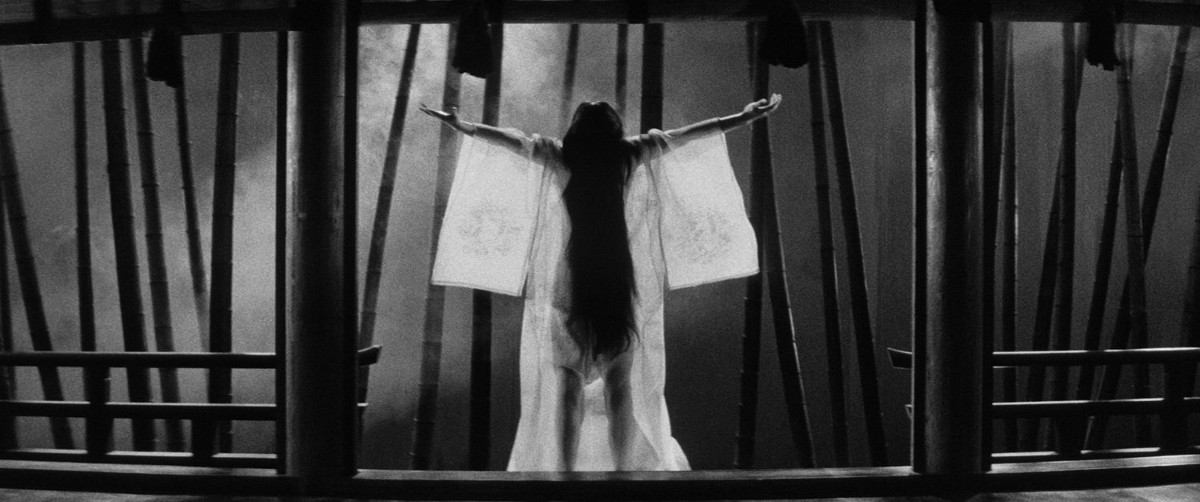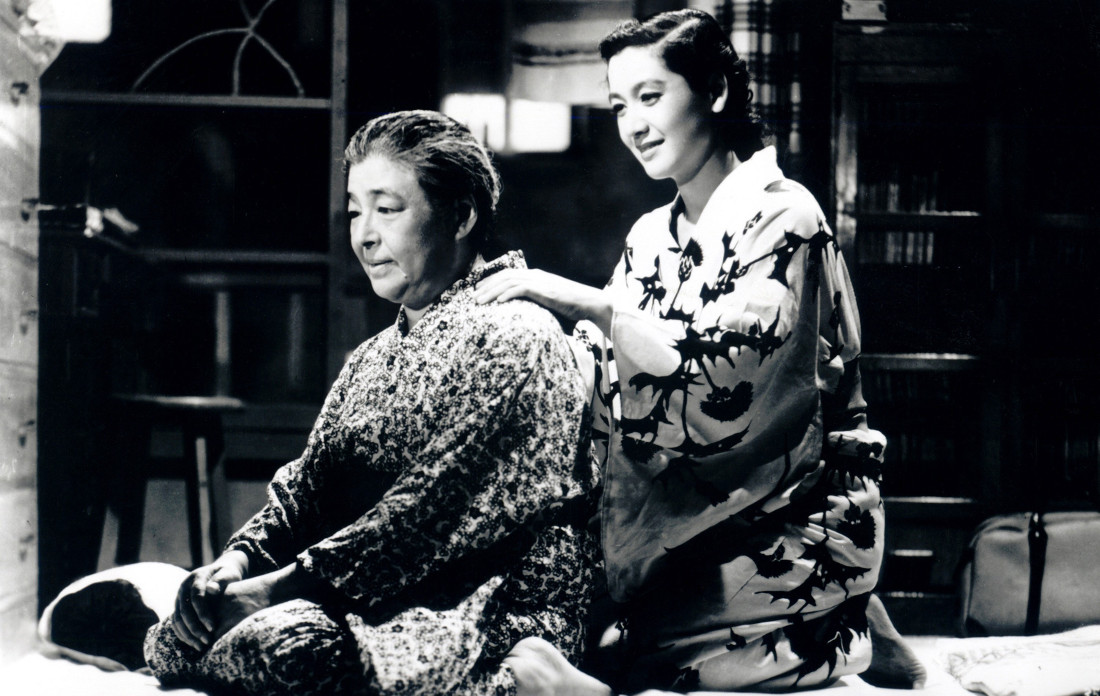Another year, another list or: The list you had to wait for all year but is now finally here! Yay!
It’s a list dominated by world cinema this year. In fact, I spy with my little eye only one Hollywood production. Wait hold on.. that’s actually not much different from last year or the year before. Well.. uhh.. go diversity I guess! I did include a section on film noir though, so there’s your dose of Hollywood should you need it. Also I once again failed to make it a top 10. A last minute entry messed it all up and I kind of did not want to delete anything else I had already written. So just like in 2013 this really is a top 11. Or I guess it could be a top 10 in base 11, so it’s all just a matter of perspective…
Previous years
Avoid like the plague
No wait that’s wrong. You’re not actively trying to avoid the plague. At least I hope not. Avoid like that smelly aunt on your birthday party. Or like your obnoxious co-worker who keeps insisting Dude, Where’s My Car? is the best film ever made. Because sometimes something is so bad that passively avoiding it just isn’t good enough. The next couple of films were so bad or so disappointing I wouldn’t recommend them if I got paid.
- 2012 – Ted (Asshole teddy bear smoking pot.. pathetic)
- 1933 – Duck Soup (Many people seem to like this. I didn’t laugh once.)
- 2015 – Insurgent (Laughable, utter waste of time)
- 2015 – Maze Runner: Scorch Trials (2015 was pretty bad, this nonsense didn’t help)
- 1977 – The Devil, Probably (Nooope. There is another Bresson film later on though)
- 1929 – Behind That Curtain (Worst. Acting. Ever.)
Do I laugh now, or wait ’til it gets funny?
Sadly this is a blog about the lesser know films. That means I generally don’t write about stuff you’re likely to know already – because what’s the point. Still, credit where credit is due, these films may be too popular to end up on this site or in the final list, but you should still go and see them because they are totally awesome.
- 1944 – Double Indemnity
- 1955 – The Night of the Hunter
- 1991 – The Double Life of Veronique
- 1993 – Three Colours: Blue
- 1994 – Three Colours: White
- 1994 – Three Colours: Red
- 2011 – A Separation
Due to the large amount of films noirs I have seen especially during #NoirSummer and #Noirvember I was also considering some film noir entries, but since there would just be too many films for a top 10 (or top 11) that way I decided to add the very best noirs to a compact list. I did kind of fail in the making-it-compact part, but at least I tried, right? In chronological order, but the ones highlighted in bold were the absolute best:
- 1931 – The Maltese Falcon
- 1936 – The Petrified Forest
- 1938 – La Bête Humaine
- 1940 – They Drive By Night
- 1941 – The Maltese Falcon
- 1944 – Murder, My Sweet
- 1945 – Leave Her to Heaven
- 1945 – Mildred Pierce
- 1948 – The Naked City
- 1952 – Five Fingers
- 1952 – Kansas City Confidential
- 1952 – The Narrow Margin
- 1956 – The Wrong Man
- 1957 – Sweet Smell of Success
Maybe this should have been an entire top 10 on its own…
The list
Now that we’ve had all that, welcome to the tl;dr section of this post. It’s just a bunch of rankings really, preceded by some text that doesn’t really seem to be adding anything worthwhile. The rankings are in alphabetical order, for what it’s worth. It’s a shame the rest of the post doesn’t follow that rule. That means you have to go and look for the films you want to read about. I think it’s better that way, because you might end up reading about all of them. Each of ’em is worth it!
| A Man Escaped: |  (8.7 / 10) (8.7 / 10) |
| Cria Cuervos: |  (9.1 / 10) (9.1 / 10) |
| Cries and Whispers: |  (9.1 / 10) (9.1 / 10) |
| Kuroneko: |  (8.6 / 10) (8.6 / 10) |
| Pather Panchali: |  (8.9 / 10) (8.9 / 10) |
| Raise the Red Lantern: |  (9.5 / 10) (9.5 / 10) |
| Sazen Tange and the Pot Worth a Million Ryo: |  (9.0 / 10) (9.0 / 10) |
| Song of the Sea: |  (8.7 / 10) (8.7 / 10) |
| Sullivan's Travels: |  (8.6 / 10) (8.6 / 10) |
| "Tokyo: |  (0.0 / 10) (0.0 / 10) |
| Story: |  (0.0 / 10) (0.0 / 10) |
Sazen Tange and the Pot Worth a Million Ryo
 | Original title: Tange Sazen yowa: Hyakuman ryo no tsubo |
| Year: 1935 | |
| Director: Sadao Yamanaka | |
| Duration: 92 min. | |
| Genres: Comedy, Drama |
Japan is mostly known for its contributions to drama, samurai action, crazy horror and anime – definitely not comedy. However there are exceptions and this is one of them. All it takes in this case is a hideous pot (the non-smokable kind) that nobody wants. It is passed on to the receivers to mock them, and they sell it to a scrap dealer for a few coins. Good riddance. But then somebody realises that the pot contains a map to a hidden treasure that might be as much as 1 million Ryo, the currency of that time. Also, I’m pretty sure that’s quite a lot of money in case you were wondering. Several parties now start looking all over town for the mystery scrap dealer and his pot. Eventually the search becomes an excuse for men to get away from their wives to have a little fun in town.
Being from 1935, this is the oldest film to make this list. It is also one of only three films of director Sadao Yamanaka to survive until today, even though he directed 23 of them. Japan has had a long tradition of samurai. They were usually portrayed as noble, cunning and brave warriors. Because Yamanaka portrayed them otherwise, he got sent into the war Japan was waging against China, and he died there pretty soon after his arrival. It makes you wonder what else this man could have made had he lived, because you can certainly see his potential from watching this film but also Humanity and Paper Balloons. What are we missing from those 20 lost films? We will probably never know, but at least we have this one to enjoy. Finally I feel I should apologise. It seems I have managed to find a film so obscure that there isn’t a single trailer of it on the interwebz. Bummer.
Cries and Whispers
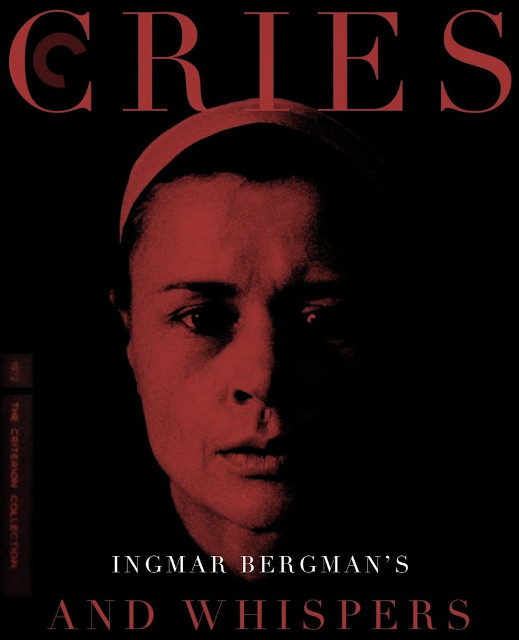 | Original title: Viskningar och rop |
| Year: | |
| Director: Ingmar Bergman | |
| Duration: 91 min. | |
| Genre: Drama |
This film was created by Ingmar Bergman because he had some sort of a vision of a big room with red walls, a red carpet, red furniture and four women all dressed in white gowns. And when this image came back to him a few times he knew he needed to make a film out of it. At least according to an interview with Bergman on my disc that’s kind of how it went. Cries and Whispers is tells a story about three sisters and one of their servants. They have come together because on of the sisters is dying. It seems that during the course of their lives, the sisters have lost the ability to feel and to love, and even losing their sister does not appear to be able to bring them back together. It is only the servant, Anna, who seems to know how to show affection.
When their bedridden sister is screaming with pain they do not know how to react, while Anna comforts her time and time again. Like a lot of Bergman films everything takes place inside and around the house. It creates an intimate setting, but intimate is the one thing this film never is except perhaps for one small moment in which two sisters seem to recall their younger years and how close they were then. But by the time the next day arrives all seems to have been forgotten. Cries and Whispers is disturbing, but also very deep and profound. It is one of Bergman’s films that is most dear to him, and even the master himself would very much like you to like it.
Pather Panchali (Song of the Little Road)
 | Original title: Pather Panchali |
| Trailer HD | |
| Year: 1955 | |
| Director: Satyajit Ray | |
| Duration: 119 min. | |
| Genre: Drama |
And so we come to the somewhat unexpected entry that turned this neatly planned top ten into a top eleven. A recently released restoration of the so called Apu Trilogy found its way to my shelf. I heard many good things about it, but didn’t really plan to see it just yet. The things I had heard about Indian cinema weren’t very inviting. I quite dislike musicals – US, Indian or otherwise, and I was a little afraid that this too would be a very unpleasant viewing. But then I read some of the comments on the release and decided to give it a try anyway. Oh and how I was not disappointed! Pather Panchali, given the English title Song of the Little Road in the opening credits, had me from start to finish. The restoration was beautifully done, but more importantly this is a truly lovely and moving film. And it is not a musical at all.
I have been told by my Indian colleagues that many Indian films are often quite tragic tales about poor people. That pretty much holds true for Pather Panchali as well. A very poor family lives in a house that is slowly falling apart. They have debts, repairs have to be made to the house and two young children, Durga and Apu, and their stubborn old aunt have to be fed. The husband of the family seems like a man with good intentions but also with a lazy nature. One day he sets out on a trip to do some work and make money, but then he doesn’t come back for months. During these months without income, the family needs to live. Children grow up and act like children, the aunt is causing some trouble and some other stuff happens. If you’re looking for a beautiful but sad drama, do not dismiss this beautiful work of art because it is from Bollywood. Give it a chance. I for one can’t wait to see the next two films in this trilogy, Aparajito and Apur Sansar!
Raise the Red Lantern
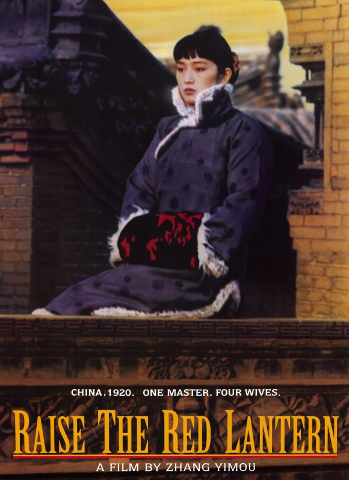 | Original title: Da hong deng long gao gao gua |
| Trailer | |
| Year: 1991 | |
| Director: Yimou Zhang | |
| Duration: 125 min. | |
| Genre: Drama |
Earlier this year when I saw Raise the Red Lantern I thought it was great and wrote a post about it. I did not realise yet that over the course of the year it grew on me even more. They way things stand now this film together with the one way at the bottom of this post are the best two films I’ve seen all year. It felt wrong not to include it because of the previous post, so here it is again. This has been a very ‘red’ year anyway come to think of it. I also saw Three Colours: Red and loved it, and Cries and Whispers too. Together with last year’s entry The Red Shoes I now have 4 films in the top regions of my charts in which red plays a very prominent role. After having seen this film, another Chinese film with a similar topic has been topping my wishlist: Farewell My Concubine. I’m so happy that the BFI is going to release it in March 2016. I’m hoping it will be of similar quality, meaning one of the ten (or eleven..) spots on next year’s list is a slam-dunk.
Raise the Red Lantern refers to an old tradition in a house of nobility in early 20th century China. The lord has several concubines/wives who live separately in their own living quarters. Every night red lanterns are lighted in the quarters of the woman with whom the master will be spending the night. This causes a lot of hostility between the women, who are now spending a lot of their time competing with each other just to be the chosen one for the night. In this small world confined by the outer walls of the residence these women will have to live their lives together, but all the hostility and distrust eventually takes their toll on all of them. Into this small world enters a young new wife, Songlian. She will have to find her place in the house without losing her mind.
Kuroneko
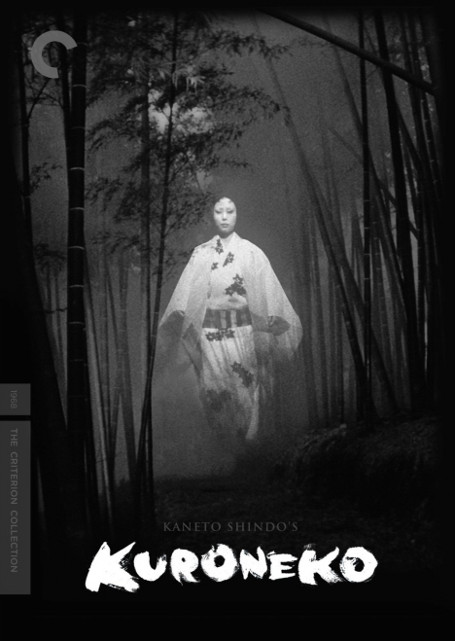 | Original title: Yabu no naka no kuroneko |
| Year: | |
| Director: Kaneto Shindô | |
| Duration: 99 min. | |
| Genre: Horror |
And then we find ourselves in a picturesque Japanese mansion. But it doesn’t take long for Kuroneko to set its tone. Two women whose husbands are out fighting in some war are brutally raped and killed by a passing horde of savage samurai. After committing their act, they set the mansion on fire and let the women burn with it. After the fire has subsided we see a black cat walking through the ashes. This is when evil spirits bring the two women back to life so they can get their revenge on all samurai. How you ask? By murdering them and drinking their blood. Yummm…
They soon become notorious throughout the region, but then one day husband-dear decides to come home. However there is one problem, he is now a samurai too. Like with one of Shindô’s previous films Onibaba, a big part of the horror aspect of Kuroneko can be found in the overall atmosphere and general sense of dread and uneasiness felt throughout the film. I’m not even sure if I fully agree with IMDb’s classification of Onibaba as a horror film, but for Kuroneko I certainly do. It contains enough of the supernatural, demons and killing to count as horror, but it isn’t a super scary film to watch.
Cria cuervos
 | Original title: Cría cuervos |
| Year: | |
| Director: Carlos Saura | |
| Duration: 110 min. | |
| Genre: Drama |
This Spanish classic stars the young Ana Torrent, whom one might know from another classic called The Spirit of the Beehive. I liked Cría Cuervos better, but since they have a similar feel it wouldn’t be a surprise that if you liked the one, you will also like the other. Cría Cuervos is written and directed by Carlos Saura, and it tells the story of a wealthy Spanish military family and the aftermath of three young children becoming orphans after both their parents die. They are then adopted by their aunt who doesn’t always seem to know what to do with them. On top of that, one of the children – Ana – is acting a bit strange from time to time. She seems to be having a fascination with death.
This might be expected though. At the start of the film she finds her father dead in bed with an unknown woman. He was either killed, or died during sex, but young Ana seems to think she killed him because she thinks she put poison in one of his drinks. She is also present while her mother is fighting her disease that ultimately kills her. As is the case with most family drama’s, the plot usually doesn’t come across as being very exciting or eventful, but that doesn’t mean that the film itself is dull in any way. Enough happens to keep you watching, and from time to time you will be treated to pieces of Jeanette’s song Por qué te vas. It is so catchy…
Sullivan’s Travels
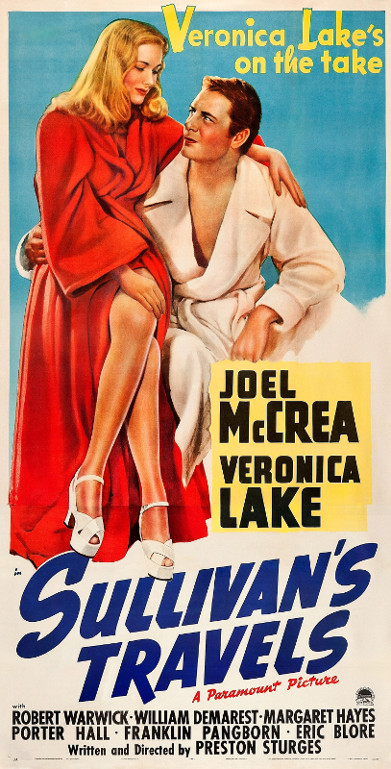 | Original title: |
| Year: | |
| Director: Preston Sturges | |
| Duration: 90 min. | |
| Genres: Adventure, Comedy, Romance, Drama |
Joel McCrea and Veronica Lake, a strange couple indeed. One a famous comedy film director, the other a poor down to earth no nonsense girl. Yet somehow they end up as partners disguised as bums while they travel across the country. Director Preson Sturges is often hailed as one of the best comedy directors of all time and this is no doubt one of his best films. There is really only one major flaw, but I’ll get to that in a moment. Firstly the comedy element works quite well. There’s a healthy exchange between slapstick, lame jokes and a few more complex situations, woven throughout what could’ve been a regular romantic drama. The plot is pretty much this: rich and successful white man wants to make a film about poverty, but since he doesn’t know what poverty is he thinks he’ll find out if he just dresses up as a hobo for a while. Reality of course is more like that Pulp song, Common People. You may hang out with them, talk like them or even look like them, but you’ll never truly know what it’s like to be poor or disadvantaged unless you’ve been in that situation all your life.
So that is pretty much what he’s being told right from the beginning, but of course he thinks he knows better and finds a way to go out there anyway. He soon meets Veronica Lake (💓💓) who sort of invites herself along his trip. Of course many silly situations follow and they fall in love, but there’s no way you couldn’t see that coming a mile away so I wouldn’t call that a spoiler. Back to that point of criticism though, one can’t ignore a particular scene early on where a coloured man slapsticks himself to a whiteface. Maybe it was considered funny then, but it’s just so wrong nowadays. However I do believe there was no real harm meant because of the church scene much later in the film. It redeems its earlier flaw, making this a very funny and very good comedy from days long gone.
Yearning
 | Original title: Midareru |
| Year: | |
| Director: Mikio Naruse | |
| Duration: 98 min. | |
| Genre: Drama |
When talking about Japanese cinema one often speaks of the big three, Akira Kurosawa, Yasujirô Ozu and Kenji Mizoguchi. But what people these days do not always realise is that it took until the 70’s for many of their films to become known outside Japan. The reason for this is that many of them, Ozu and Mizoguchi films more so than Kurosawa’s, were thought to be too Japanese. But while the world today has come to know and love the films of these big three, others remain in obscurity. Mikio Naruse is a sad example of this. His best films are not any worse than those by any of the other more known directors, but sadly they do not have the same widespread audience. Time to change that, or at least try to.
Yearning is one of Naruse’s best works. It tells a story that could’ve just as easily been told by Ozu – one of a family suffering the aftermath of the war. A young woman loses her husband in the war. Out of love for her lost husband and his family, she keeps running his humble general store for almost two decades after his death. Then tragedy strikes again. A big supermarket chain is opening a store in the neighbourhood, causing clients to go there instead. The younger brother of the widow tells her his big secret, one that causes her to question whether or not it is time for her to move on. But doing so would mean abandoning her dead husband and his family.
Song of the Sea
 | Original title: Song of the Sea |
| Trailer HD | |
| Year: 2014 | |
| Director: Tomm Moore | |
| Duration: 93 min. | |
| Genres: Animation, Fantasy |
2014 is almost ancient history by now but it still delivers the most recent entry in this year’s list. These past few years have certainly not been among the better years in film overall, but luckily each year still has a few surprises in store. Song of the Sea is one I had been looking forward to ever since seeing The Secret of Kells a few years ago. Like its predecessor this too is a beautifully animated Celtic folk tale, but it doesn’t suffer from the same major flaw. Kells ended very abruptly as if they ran out of time, money or both, but Song of the Sea takes its time everywhere and never feels rushed. It keeps the magical feeling of the folk tale intact with beautiful songs, music, odd characters and gorgeous environments.
Song of the Sea tells a tale of a selkie, a human who can turn into a seal. A boy named Ben and his little selkie sister Saoirse live together with their father in a lighthouse. After some unsettling events their granny takes them to live with her in the big city. Not soon after they find that an evil woman and her owls are after Saoirse and their adventure starts. It takes them to many strange places where they meet some very odd characters. But all in all Song of the Sea is a very entertaining film and it is an absolute must see for children, fans of animation and fans of anything Celtic. Just like its 2009 predecessor it is an absolute feast for the senses!
A Man Escaped
 | Original title: Un condamné à mort s'est échappé ou Le vent souffle où il veut |
| Trailer HD | |
| Year: 1956 | |
| Director: Robert Bresson | |
| Duration: 99 min. | |
| Genre: Thriller |
Someone sentenced to death escaped, or the wind blows where it wants. That would be my attempt at a translation of this crazy long film title. A film that kept me glued to the edge of my seat for its entire duration of 99 minutes. That might not be so strange until you find out that this is a film about a French dude in a little prison cell. C’est tout. Well alright, he’s trying to escape from it too. A Man Escaped is based on the true story of a French resistance fighter who was indeed taken prisoner and who indeed attempted an escape. In the real story the man is called André Devigny and the location was the Lyon prison Montluc in the year 1943, but that doesn’t really matter for the film. What does matter is that the film kept very true to his book.
Since the plot isn’t very much worth talking about I guess I’ll fill this paragraph with a few more nice bits of trivia. The minimalistic approach that director Robert Bresson took in making this film made it possible for him to run with a mostly amateur cast. There is a fair bit of voice over, but the main character you see in the image has very little spoken dialog. To make things feel even more authentic, Devigny was used as an adviser while making the film. According to IMDb, they even used some of the actual rope used in the real-world escape to add to the authentic feel. The French resistance was quite often the subject of some great films. If any of them appealed to you so will this one. Similarly, if you liked A Man Escaped, be sure to check out these two Jean-Pierre Melville films: Le Silence de la Mer and L’Armée des Ombres. Others include The Train and Le Dernier Métro.
Tokyo Story
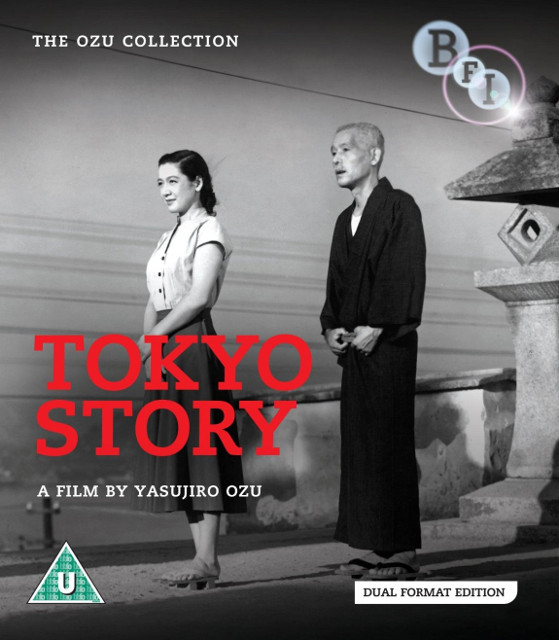 | Original title: Tôkyô monogatari |
| Trailer HD | |
| Year: 1953 | |
| Director: Yasujirô Ozu | |
| Duration: 136 min. | |
| Genre: Drama |
A few months ago, at the end of summer (Sept. 5), one of Japan’s greatest film stars and possibly their most beloved one passed away: Setsuko Hara. To the world she is known best for her work with Yasujiô Ozu, whom I mentioned earlier. Tokyo Story is often considered to be among the absolute best films ever created, and a big part of that can be attributed to Hara’s radiant personality in it. Those unfamiliar with Japanese cinema ought to know that Ozu was known for making simple but very intense family drama’s. Tokyo Story is his best. It tells a simple story about an elderly couple who live on the countryside. One day they visit Tokyo for a few days to be with their many children. It seems however that their children are too busy with their own lives, jobs and children to have any time left to spend with their parents.
I like to describe Ozu films as a calm gentle stream of water quietly going wherever it may, but always carrying along a little something of everywhere it has been. There is never any action in his films. Events progress at a calm and steady pace, but he always manages to make the audience care deeply about what is happening on screen. One way he does this is by restraining the emotions of his characters, making you feel what they can’t or won’t allow themselves to feel. The characters often seem very cold and distant, but this is also because Japanese culture isn’t like our own when it comes to showing affection. An example is when a tragic event occurs and everyone is in the same room, but there is no hugging, hardly any crying and really no physical contact at all.





